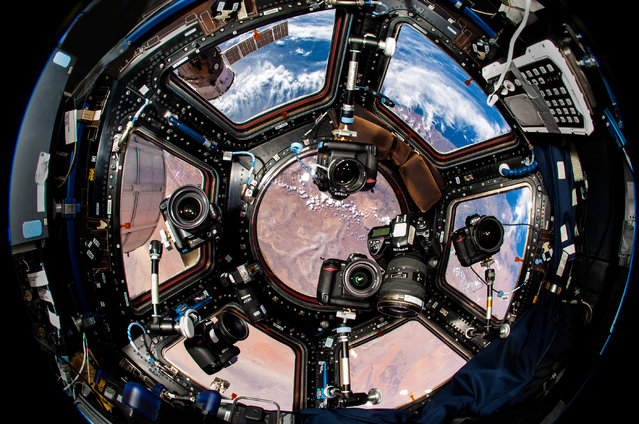
Astronaut Donald R. Pettit would often rig an array of as many as six cameras in the cupola windows and set them all to fire continuously for events such as sunsets, which only last around seven seconds on the ISS. (Photo by Donald R. Pettit)
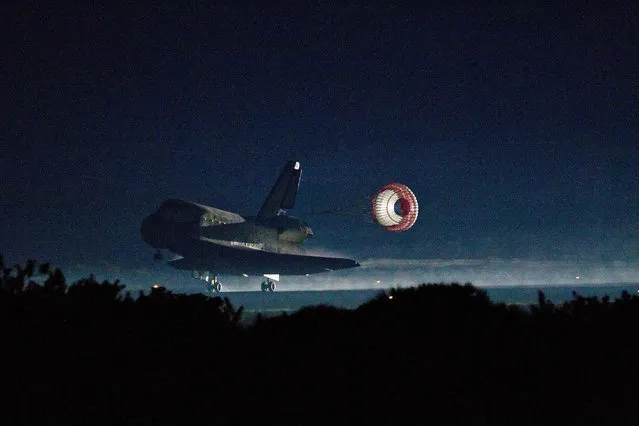
In this Thursday, July 21, 2011 file photo, the drag chute is deployed as the space shuttle Atlantis lands at the Kennedy Space Center in Florida, completing STS-135, the final mission of the NASA shuttle program. (Photo by Smiley N. Pool/ Houston Chronicle via AP Photo)

In this July 8, 2011 file photo, the space shuttle Atlantis lifts off from the Kennedy Space Center in Cape Canaveral, Fla. This is the 135th and final space shuttle launch for NASA. (Photo by Chris O'Meara/AP Photo)
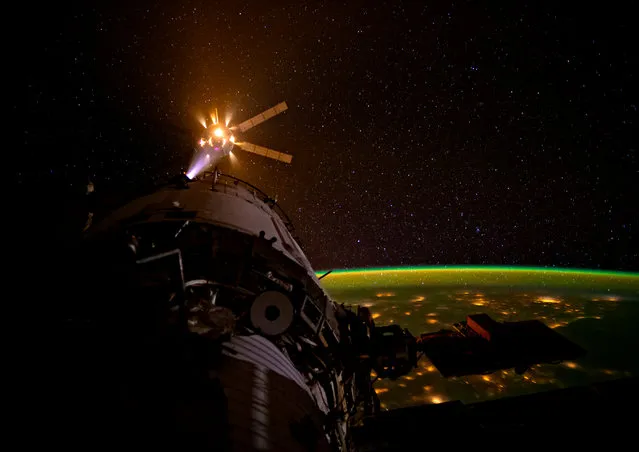
Snorting fire from its nozzles, a European Space Agency un-piloted cargo vehicle approaches the International Space Station. (Photo by Donald R. Pettit)
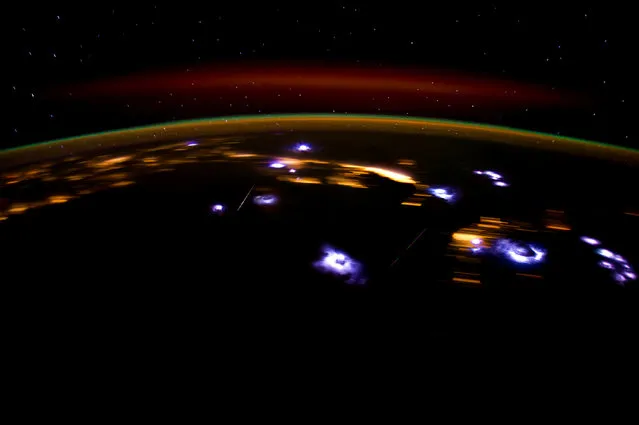
A meteorite from the Lyrid meteor shower burns up over Florida. (Photo by Donald R. Pettit)
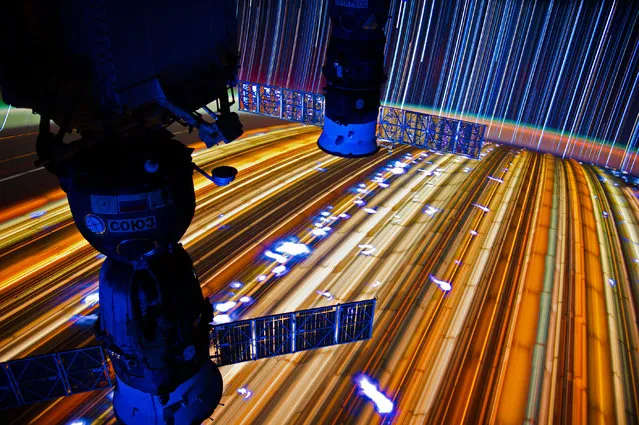
A time-lapse photo showing stars and the lights of Earth streaking past. The bright white flashes are created by lightning bursts illuminating the clouds. (Photo by Donald R. Pettit)
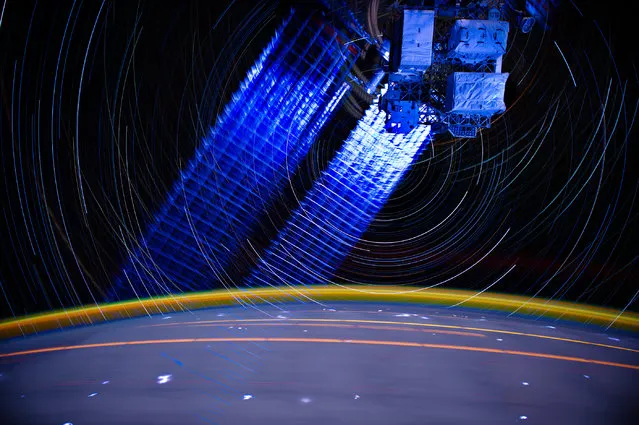
Stars and the lights of Earth leave trails in this time-lapse photograph. The white flashes are lightning illuminating the clouds. (Photo by Donald R. Pettit)

The Apollo 11 Lunar Module ascent stage, with astronauts Neil A. Armstrong and Edwin E. Aldrin Jr. aboard, is photographed from the Command and Service Modules in lunar orbit in this July, 1969 file photo. (Photo by Reuters/NASA)
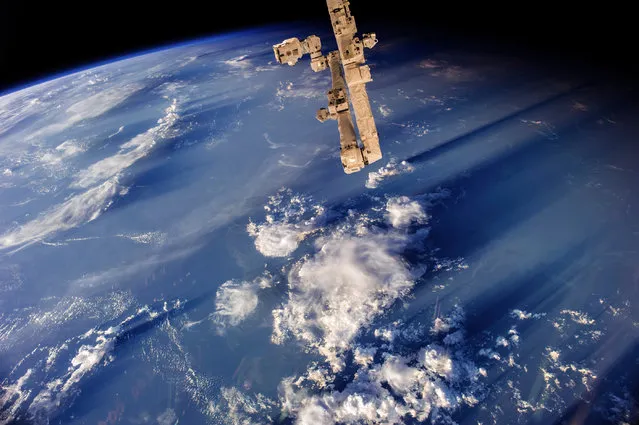
A shot of clouds casting long shadows as the sun sets over Earth. (Photo by Donald R. Pettit)
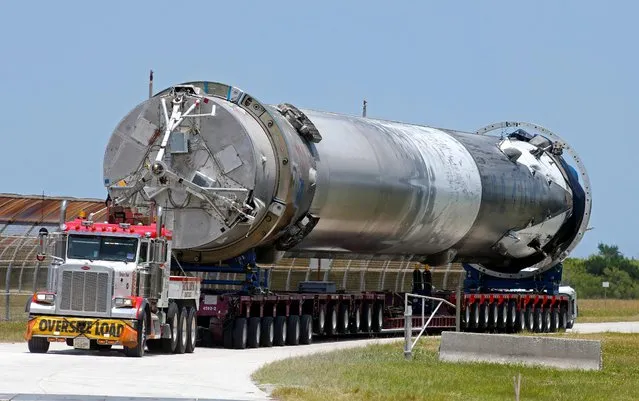
The recovered first stage of a SpaceX Falcon 9 rocket is transported to the SpaceX hangar at launch pad 39A at the Kennedy Space Center in Cape Canaveral, Florida May 14, 2016. (Photo by Joe Skipper/Reuters)
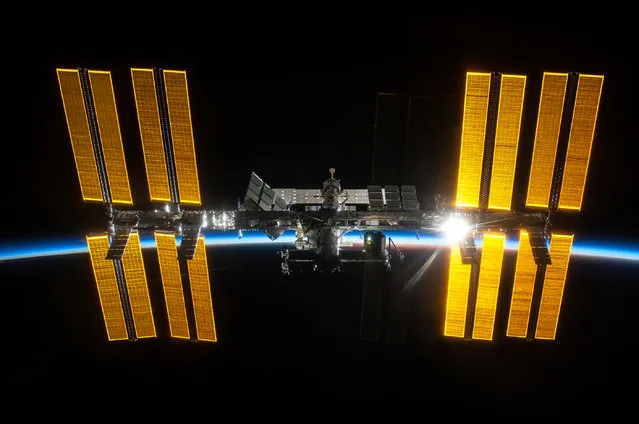
The International Space Station, its construction complete, as seen from Space Shuttle Discovery. (Photo by crew of STS-119 )

In this October 9, 2012, file photo, Felix Baumgartner, in pressurized suit on platform at left, prepares to enter the balloon capsule in Roswell, N.M. The Austrian daredevil became the first skydiver to break the speed of sound when he jumped from a small capsule 24 miles above the Earth on Oct. 14, 2012, and landed safely on the ground near Roswell, N.M., nine minutes later. Aikins helped train Baumgartner for that stunt and was the backup jumper. (Photo by Matt York/AP Photo)
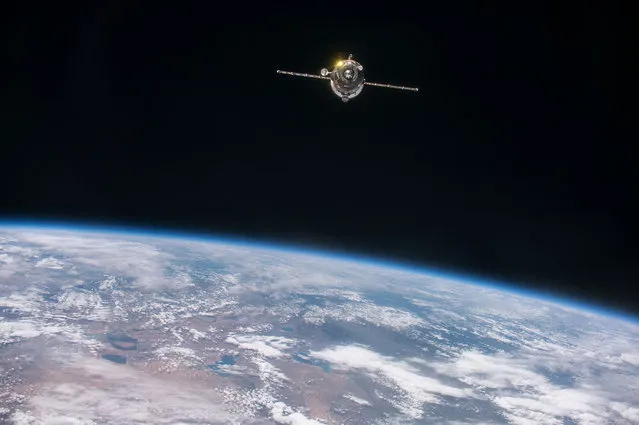
The undocked Russian Progress 62 spacecraft backs away from the International Space Station for a test of the upgraded tele-robotically operated rendezvous system on July 1, 2016. The Progress resupply vehicle is an automated, unpiloted version of the Soyuz spacecraft that is used to bring supplies and fuel to the International Space Station. (Photo by NASA)
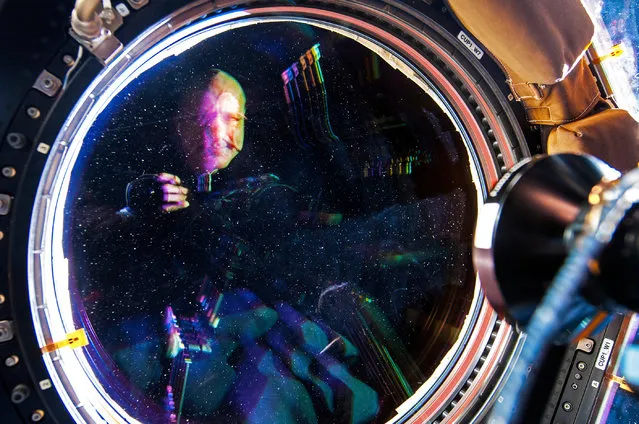
An astronauts selfie. Pettit photographed himself reflected in a window on board the International Space Station. (Photo by Donald R. Pettit)
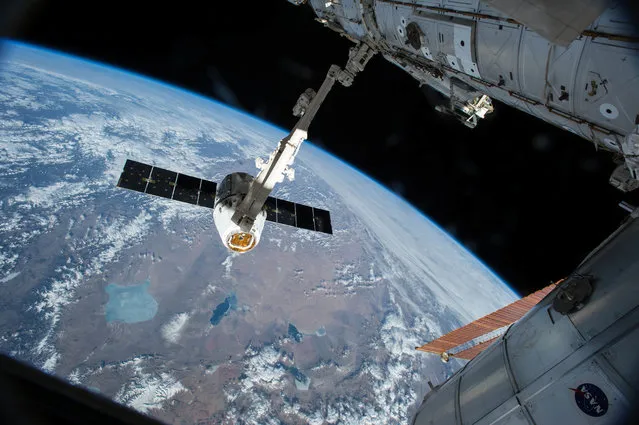
In this Friday, April 17, 2015 file photo, the Canadarm 2 reaches out to capture the SpaceX Dragon cargo spacecraft for docking to the International Space Station. Americans haven't rocketed into orbit from their home turf since NASA's last shuttle flight in 2011. SpaceX and Boeing expect to resume human launches from Cape Canaveral in another year or two. (Photo by AP Photo/NASA)
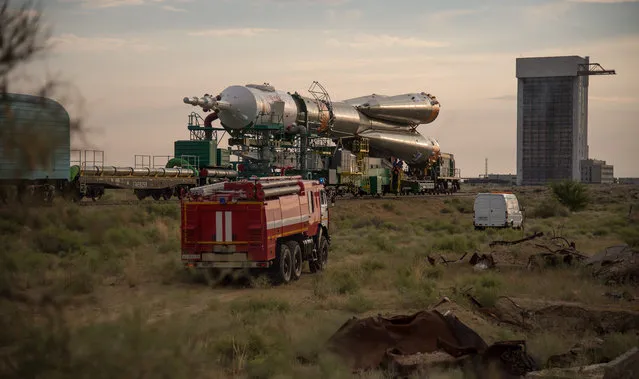
The Soyuz MS-01 spacecraft is rolled out by train to the launch pad at the Baikonur Cosmodrome, Kazakhstan, Monday, July 4, 2016. NASA astronaut Kate Rubins, cosmonaut Anatoly Ivanishin of the Russian space agency Roscosmos, and astronaut Takuya Onishi of the Japan Aerospace Exploration Agency (JAXA) will launch from the Baikonur Cosmodrome in Kazakhstan the morning of July 7, Kazakh time (July 6 Eastern time.) All three will spend approximately four months on the orbital complex, returning to Earth in October. (Photo by Bill Ingalls/NASA)
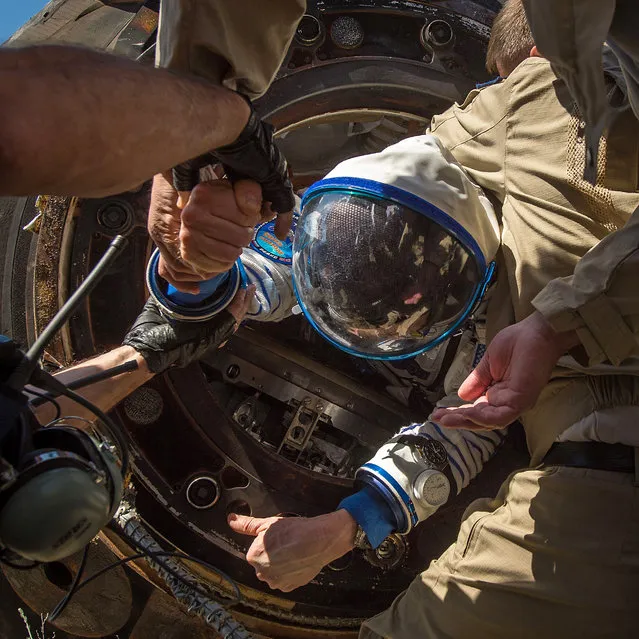
Tim Kopra of NASA is helped out of the Soyuz TMA-19M spacecraft just minutes after he and Yuri Malenchenko of Roscosmos and Tim Peake of the European Space Agency landed in a remote area near the town of Zhezkazgan, Kazakhstan on Saturday, June 18, 2016. Kopra, Peake, and Malenchenko are returning after six months in space where they served as members of the Expedition 46 and 47 crews onboard the International Space Station. (Photo by Bill Ingalls/NASA)
05 Sep 2016 11:34:00,
post received
0 comments
